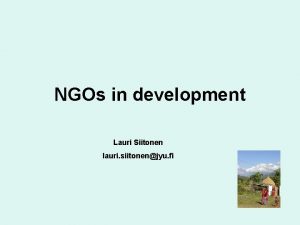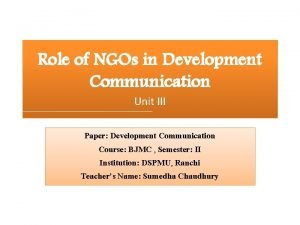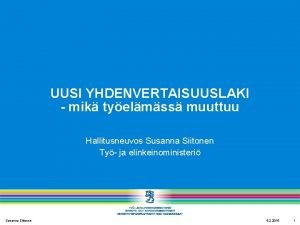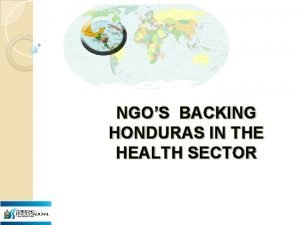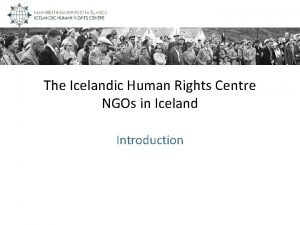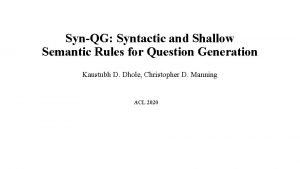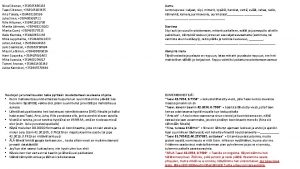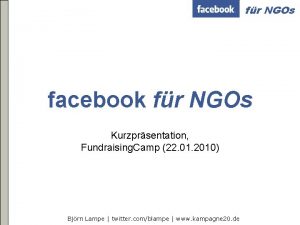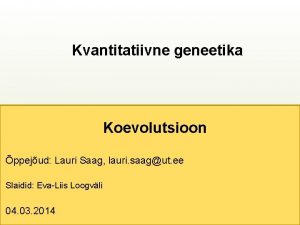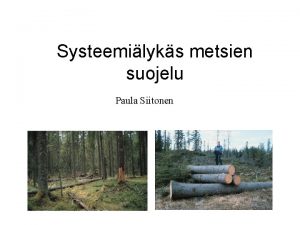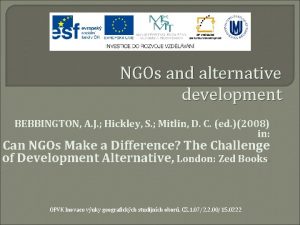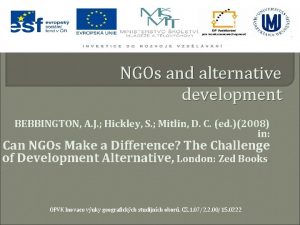NGOs in development Lauri Siitonen lauri siitonenjyu fi












- Slides: 12

NGOs in development Lauri Siitonen lauri. siitonen@jyu. fi

Contents 1. Introduction 2. The Nordic context 3. The history and role of private aid organisations in Finland 4. The government’s subsidy arrangements for NGDOs 5. The evaluation of NGDOs aid projects 6. Conclusions

1. Introduction • Background: – The wave of democratization (1974 -) – Demand within the development debate • The failure of the developmental state • The failure of the structural adjustment programs • The aid fatigue

The promises of the NGOs 1. Directly reaching the poor 2. Mobilizing local demands and targeting traditionally excluded people 3. Providing sustainable development 4. Strengthening democracy

Critics 1. 2. 3. 4. Bureaucracy Paternalism Less sustainable Limited autonomy

The Nordic context • Respect for the Civil society organisations (CSO) – CSO’s role in the Nordic welfare state – Popularity of volunteerism • Particular role in the aid policies • Generous support for the NGDOs

Share of bilateral ODA to/through NGOs 2000 -2006 Total ODA as % of GNI 2005 -2006 Denmark 7. 0 0. 83 Finland 5. 9 0. 43 Ireland 13. 5 0. 48 Netherlands 14. 7 0. 85 Norway 13. 6 0. 91 Sweden 13. 5 0. 99 5. 1 0. 34 TOTAL OECD / DAC

3. The history and role of private aid organisations in Finland • The missionary tradition (1860 s -) – The Finnish Missionary Society (est. in 1859) – Fida International (est. in 1927) • The humanitarian tradition (1877 -) – Finnish Red Cross (est. in 1877) – Save the Children (est. in 1922) – Finn. Church. Aid (FCA, est. 1947)

• The solidarity movements (1960 s -) – International Solidarity Foundation (est. 1970) – The Solidarity Centre of the Finnish Labour (1986) • ‘One per cent movement’ (1979 -1986) • Service Centre for Development Cooperation (KEPA, est. 1985)

4. The government’s subsidy arrangements for NGDOs • 1974 -1985 • 1985 -1993 • 1993 -2008

5. The evaluation of NGDOs aid projects • Sustainability of the projects? • Gained privileges vs. quality control • Codes of conduct • From volunteerism to professionalism

Conclusions • NGOs are important but can not replace the state • NGOs, too, need to be efficient in development work
